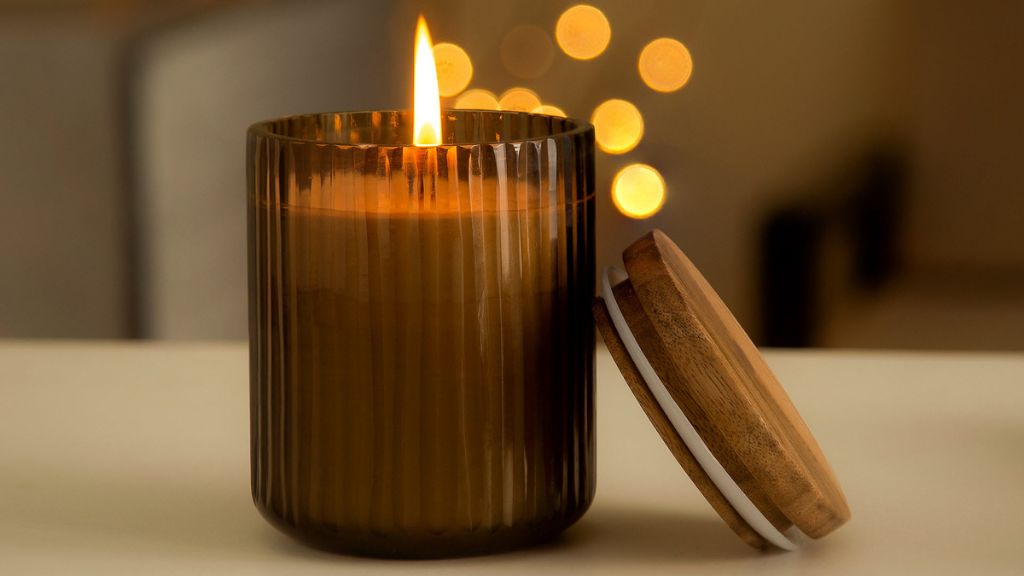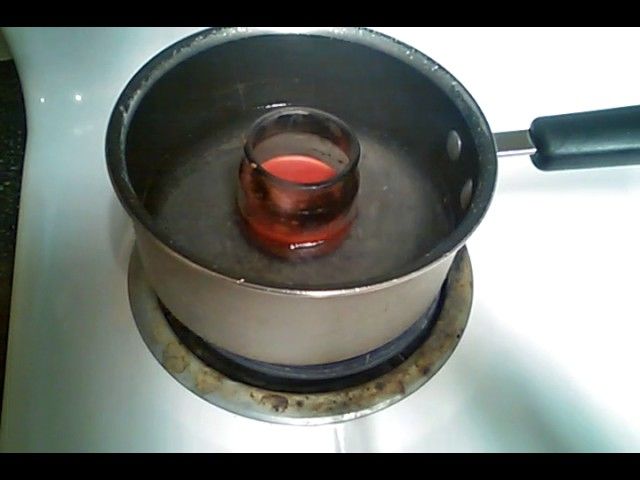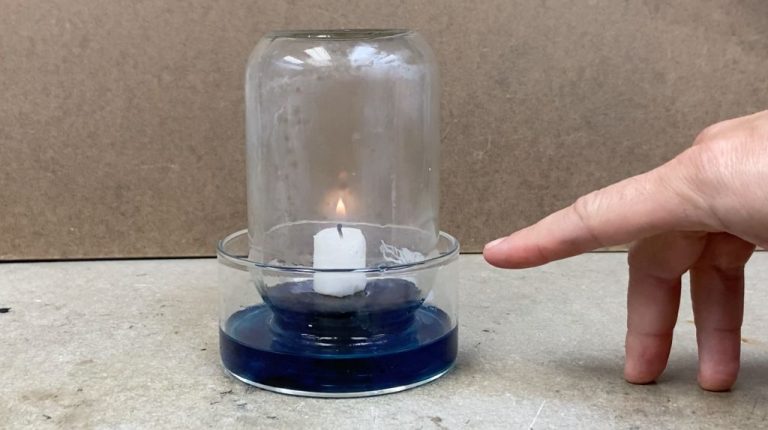Why Do People Get Wicks?
A candle wick is a cord made of twisted cotton or fiber that is located inside the candle. The wick’s purpose is to draw wax up into the flame in order to sustain a continuous burn. When a candle is lit, the wick absorbs the wax liquefied by the flame and pulls the melted wax up into the flame through a capillary action. This creates a pool of liquid wax around the wick, which is then vaporized by the flame. As the wax vaporizes, it helps light up the flame. Wick design is an important part of candle making and there are different types of wicks for different candle purposes.
Function of Wicks
Wicks are a crucial component of candles that allow them to burn. According to Homesick, wicks serve two main purposes: capillary action and lighting the flame.
The wick provides capillary action by absorbing liquid wax and drawing it up to the top. This allows the wax to be vaporized at the tip of the wick in order to sustain the flame. The wick essentially acts as a straw, sucking up melted wax until it is consumed by the flame.
The wick also serves as the ignition point for lighting the candle. When the wick is lit, it forms a flame that is able to melt and burn the wax in a controlled manner. The wick’s shape and material composition allow it to burn slowly at an even rate, maintaining the flame and providing light.
Without a properly functioning wick, a candle would not be able to draw wax, light a flame, or burn evenly. The capillary action of wicks makes candles possible and allows for consistent, safe burning.
Types of Wicks
There are several common types of wicks used in candle making:
Cotton wicks are made from natural cotton fibers. They are soft and flexible. Cotton burns cleanly but requires frequent trimming (Source).
Paper core wicks contain a cotton exterior braided or twisted around a paper core. The paper core helps the wick stand upright. Paper cored wicks tend to burn hotter and brighter than plain cotton (Source).
Zinc core wicks also contain an interior zinc wire, which helps anchor the wick and provides rigidity. Zinc core wicks burn slower and cooler than plain cotton or paper core wicks.
Braided wicks contain several woven cotton strands for added stiffness and burn consistency. Braiding prevents bending and mushrooming of the wick.
Self-trimming wicks are designed with a special wax coating so that the wick curves over as it burns, keeping the tip snuffed.
Wick Sizing
The proper wick diameter and size depends on factors like the type of wax and the diameter of the candle container. Using the wrong wick size can cause issues like tunneling, poor scent throw, or smoking candles.
For soy wax candles, a good rule of thumb is the larger the diameter of the candle, the larger the wick size. For example, a small candle with a diameter of 2 inches would use a smaller wick around CD 4-6 size. A large candle with a 4 inch diameter would need a bigger wick around CD 10-12 size. 1
With beeswax candles, the wick size rule is the opposite – the larger diameter candle requires a smaller wick like CD 12-14 size and small candles need larger wicks like CD 20 size. Beeswax burns hotter than soy wax so requires a smaller wick to prevent issues. 2
Wick sizing charts provide general guidelines but testing is needed to find the optimal wick for a wax and candle container combo.
Fragrance Diffusion
The wick plays a critical role in how well a candle’s fragrance is dispersed into the air. As the wax pool melts, the liquefied wax travels up the wick via capillary action. When the wick reaches the flame, the fragrance oils in the wax are vaporized and released into the air. This process allows the aroma to be evenly distributed throughout the room.
The width of the wick can significantly impact scent throw. Wider wicks tend to promote stronger fragrance diffusion as more wax can travel up the wick at one time to be heated and vaporized. Conversely, thinner wicks limit how much wax reaches the flame, reducing fragrance diffusion. Studies show that lower meltpoint waxes, like paraffin, require wider wicks to maximize fragrance throw whereas higher meltpoint waxes like soy wax tend to maintain scent throw even with smaller wicks.
The type of fragrance also influences wick selection. Fragrances with heavy base notes like patchouli and musk require larger wicks to fully vaporize the oils whereas light, citrus scents can often be fully diffused with smaller wicks. Ultimately, pairing the optimal wick width to the wax, vessel, and fragrance is key to maximizing fragrance diffusion.

Flame Characteristics
The size and shape of the candle flame is largely determined by the wick. Thicker wicks tend to produce taller flames, while thinner wicks create shorter flames. According to a 2023 study published in Fuel, wicks with larger diameters generate flames that are more elongated in shape (Furlong).
Wicks also impact smoke production. Cotton wicks typically produce minimal smoke, while some specialty wicks are designed to generate more atmospheric smoke effects. Smoke is created when hydrocarbons are not fully combusted, so wicks that allow more fuel to be drawn up tend to create smokier flames (https://candles.org/elements-of-a-candle/wicks/).
In summary, wick thickness and material have a measurable effect on the height, shape, and smoke production of the candle flame. Wick selection gives candle makers control over the visual aesthetics and burning characteristics.
Safety
Proper wick selection and maintenance is crucial for candle safety. The main risks to avoid are soot, tunneling, and mushrooming. Soot occurs when the wick is too large for the wax pool, producing excess smoke and carbon buildup. Tunneling happens when the flame melts the wax unevenly, creating a cavity around the wick. Mushrooming is when the tip of the wick becomes enlarged and misshapen from the flame. To reduce these risks:
Choose a wick size appropriate for your candle diameter, wax type, and vessel. Larger candles need wider wicks to avoid tunneling. Softer waxes require smaller wicks than hard waxes. Containers can amplify heat and require wicks sized down. Refer to manufacturer guidelines for ideal pairings. Avoid wicks too large or too small for the setup.
Trim wicks to 1⁄4 inch before each lighting to avoid mushrooming and soot. The flame should be steady, not smoking or sparking. If mushrooming occurs, pinch off the carbonized tip and trim the wick shorter. If tunneling or significant soot appears, the wick needs to be trimmed or switched for a larger size.
Never leave a burning candle unattended. Extinguish the flame if it becomes high, flickering, or angled. This may indicate a wick issue. Allow the wax pool to solidify completely before relighting a candle. Adhere to safe burning practices like placing candles in holders on flat, stable surfaces away from drafts and vents.
With the proper wick fit for the candle, trimming before use, close supervision, and safe setup, candle risks can be minimized for a safe, enjoyable experience.
Aesthetics
The aesthetics of a candle wick play an important role in the overall visual design of a candle. Wicks are a visual element that can complement or contrast with the candle vessel, wax color, fragrance, and other design components.
Many candle makers carefully select wicks that match the style of the candle container. For example, a braided wick may suit a rustic, natural look while a sleek, thin wick pairs well with a modern vessel. Wicks come in various colors like black, white, tan, and more to coordinate with wax hues.
Creative candle makers use wicks as an opportunity to add pops of color, texture, and visual interest. Twisted, striped, or patterned wicks can make a decorative statement. The visible remnants of a burned wick left in a vessel also become part of the aesthetic. Some wick styles mushroom into round, carbonized puffs while others remain slender as they burn.
In summary, wicks are an integral part of candle design and their look should align with the overall visual theme. The style, color, and burning characteristics of a wick all contribute to the aesthetics of a candle.
Cost Savings
Many people choose to use wicks as a way to save money on candles and other wax-based products. While high-quality, braided cotton wicks can be more expensive, cheaper wick options like wood, paper, and zinc core wicks still provide effective performance at a fraction of the cost. As one YouTube video explains, “You are not going to make a lot of money with snail shells, but they are free and if you have a lot of them, you can create lovely natural candles very inexpensively” (source). The key is sourcing inexpensive materials and avoiding costly branded wicks. With some clever sourcing, wicks enable people to make quality candles affordably.
Conclusion
In summary, wicks play an essential role in enabling candles to burn properly and serve their intended function. The wick acts as a conduit to draw wax up to the flame, regulating the rate of burning. Wick sizing and material impact how high the flame burns, how quickly wax is consumed, and the melting pool size. Cotton and paper fiber wicks are common, providing a bright flame, though more advanced wicks like zinc core and braided varieties offer performance benefits. Beyond functional properties, wicks allow for customization and personalization through fragrance diffusion and aesthetic design. Wick selection ultimately determines the look, scent, burn time, and safety of a candle. Thoughtful wick choice enables candle makers to craft the ideal experience for any setting. In the end, this small component makes all the difference in candle performance.





